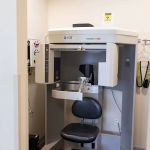Choosing the Right Toothbrush for Kids: A Comprehensive Guide for Parents
- 1. The Importance of Choosing the Right Toothbrush for Kids
- 2. Different Types of Toothbrushes for Kids
- 3. Factors to Consider When Choosing a Toothbrush for Kids
- 4. Age-Appropriate Toothbrushes for Your Child
- 5. Real-Life Case Study: Helping Kids Develop Healthy Dental Habits
- 6. Tips for Maintaining Your Child’s Toothbrush
The Importance of Choosing the Right Toothbrush for Kids
Choosing the right toothbrush for your child is a crucial part of establishing good oral hygiene habits. Early childhood is a critical time for developing these habits, as improper brushing can lead to cavities, gum disease, and other dental issues later in life. Ensuring your child has the correct toothbrush that fits their needs can make brushing more enjoyable and effective. Many parents overlook the significance of choosing a toothbrush tailored for their child's age and size, which can impact their ability to clean their teeth properly.
Additionally, children are still learning how to brush effectively, so using the right toothbrush can make a big difference in their brushing experience. Whether it’s the softness of the bristles, the size of the handle, or the shape of the head, each factor plays a role in your child’s ability to brush effectively and comfortably.
Different Types of Toothbrushes for Kids
There are several types of toothbrushes designed specifically for children. The main categories include:
1. Manual Toothbrushes
Manual toothbrushes are the traditional choice and are available in various designs. They come in fun colors, characters, and shapes that can appeal to kids. These toothbrushes typically feature soft bristles that are gentle on young gums and teeth.
2. Electric Toothbrushes
Electric toothbrushes for kids have become increasingly popular, thanks to their ability to make brushing more fun and efficient. These toothbrushes often come with built-in timers to ensure kids brush for the recommended two minutes and some even feature fun sounds or music to keep them entertained.
3. Battery-Powered Toothbrushes
Battery-powered toothbrushes are a good middle ground between manual and fully electric brushes. These offer some of the benefits of an electric toothbrush, such as a vibrating brush head, but are generally more affordable and easier to use than traditional electric toothbrushes.
Factors to Consider When Choosing a Toothbrush for Kids
When selecting a toothbrush for your child, several factors should be considered to ensure it is both effective and comfortable:
1. Age
The most important factor when choosing a toothbrush is your child’s age. A toothbrush that works well for a toddler may not be suitable for a pre-teen. Young children need smaller toothbrush heads and softer bristles, while older kids may need brushes with firmer bristles and a larger head.
2. Brush Head Size
The size of the brush head is crucial for ensuring proper cleaning. A brush with a head that is too large may be difficult for a child to maneuver, especially in the back of the mouth. A smaller, more compact head is ideal for younger children who are just learning how to brush.
3. Bristle Softness
For children, soft bristles are recommended to avoid damaging delicate gums and enamel. Harder bristles may seem more effective, but they can be harsh on your child's teeth and gums, potentially causing sensitivity or discomfort.
4. Grip and Handle
The handle should be easy for your child to hold and control. Many kids’ toothbrushes are designed with ergonomic, non-slip grips to help them better control the brush. A good handle can make brushing easier and more enjoyable, particularly for younger children.
Age-Appropriate Toothbrushes for Your Child
Different age groups require different types of toothbrushes to ensure effective brushing. Below are some general guidelines:
1. For Infants (0-2 years)
For infants, it’s important to choose a toothbrush with soft, gentle bristles and a small head. These brushes are typically designed to clean your baby’s first few teeth. A finger toothbrush or a small, soft-bristled brush is a good option at this stage. At this age, your child is not yet able to brush by themselves, so you will need to brush their teeth for them.
2. For Toddlers (2-5 years)
As your child becomes a toddler, they can begin to brush their own teeth, although you will still need to supervise. Look for a toothbrush with a small head, soft bristles, and a large handle that your child can grip comfortably. Electric toothbrushes with timers can help make brushing more fun and help your child develop good habits.
3. For Older Kids (5-12 years)
For older children, you can opt for a toothbrush that resembles those used by adults. They may prefer a toothbrush with a larger head and firmer bristles, but make sure it is still designed for their age group. At this stage, kids should be brushing on their own, but you should continue to check their technique to ensure proper brushing habits.
Real-Life Case Study: Helping Kids Develop Healthy Dental Habits
Consider the story of Emma, a 6-year-old girl who struggled with brushing her teeth properly. Her parents noticed that her teeth were not as clean as they should be, and she wasn’t interested in brushing. After switching to an electric toothbrush with a timer and her favorite character on the handle, Emma became much more excited about brushing. The fun aspect of the toothbrush kept her engaged, and the timer ensured she brushed for the full recommended two minutes.
With continued guidance and support, Emma’s brushing improved dramatically, and her parents were able to instill lifelong dental habits that would benefit her in the long run. This case shows that the right toothbrush can make a huge difference in motivating kids to develop strong oral hygiene practices.
Tips for Maintaining Your Child’s Toothbrush
Maintaining a child’s toothbrush is essential to ensure it is always ready for use and remains hygienic. Here are a few simple tips to keep your child’s toothbrush in good condition:
- Replace toothbrushes regularly: Replace your child’s toothbrush every three to four months, or sooner if the bristles are frayed.
- Clean after every use: Rinse the toothbrush thoroughly after each use to remove toothpaste and debris.
- Store properly: Store the toothbrush in an upright position and allow it to air dry to prevent bacteria growth.
- Consider a travel case: If your child travels frequently, use a toothbrush case to protect it from germs and damage.
Conclusion: Choosing the Right Toothbrush for Your Child
Choosing the right toothbrush for kids is more than just about picking a fun design. It’s about ensuring that your child has the proper tools to develop effective oral hygiene habits that will benefit them for years to come. By considering factors like age, bristle softness, and toothbrush size, you can select the best option for your child. Moreover, incorporating fun elements into the toothbrush, such as favorite characters or electric features, can help motivate your child to enjoy brushing.
For more expert advice on children's dental health and toothbrushes, visit Dentistry Toothtruth.







 All Star Orthodontics5.0 (566 review)
All Star Orthodontics5.0 (566 review) Duxbury Children's Dentistry4.0 (14 review)
Duxbury Children's Dentistry4.0 (14 review) Apple Grove Dental4.0 (536 review)
Apple Grove Dental4.0 (536 review) Gentle Dental Brea4.0 (63 review)
Gentle Dental Brea4.0 (63 review) Parkland Dental Center4.0 (23 review)
Parkland Dental Center4.0 (23 review) Gardner & La Rochelle Orthodontics4.0 (304 review)
Gardner & La Rochelle Orthodontics4.0 (304 review) The Importance of Oral Health Education During Pregnancy for a Healthy Pregnancy
The Importance of Oral Health Education During Pregnancy for a Healthy Pregnancy Best Tips for Brushing Your Teeth Properly for Healthy Gums: Essential Techniques for Oral Health
Best Tips for Brushing Your Teeth Properly for Healthy Gums: Essential Techniques for Oral Health Why Skipping Dental Checkups Can Lead to Bigger Oral Health Problems
Why Skipping Dental Checkups Can Lead to Bigger Oral Health Problems Advantages of Porcelain Dental Restorations
Advantages of Porcelain Dental Restorations How Can Diabetes Cause Tooth and Gum Problems? Preventing and Managing Oral Health Issues
How Can Diabetes Cause Tooth and Gum Problems? Preventing and Managing Oral Health Issues Healthy Habits for Promoting Good Oral Health and Hygiene: Tips for a Healthy Smile
Healthy Habits for Promoting Good Oral Health and Hygiene: Tips for a Healthy Smile